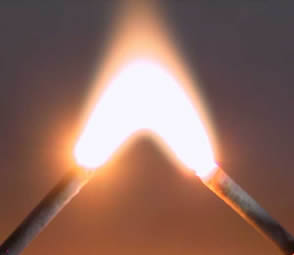Materials Testing has become an integral part of practical science throughout the world, and is the basis of all engineering and design industries. Without it, material properties, both simple and exotic, would be unknown and we would be unable to select appropriate materials for specific applications.
The first reported use of UV testing was in the early 19th century, when it was observed that the carbon arc lamps used in the theatre caused significant degradation and fading of the stage curtains (as well as the actors). This contributed to scientist’s understanding of the electromagnetic (EM) spectrum at the time. As it was realised that a phenomenon not perceivable to humans normal senses, in this case ultraviolet light, was causing damage to the curtain material.
Carbon arc lamps produce an intense light when an electric arc is struck between two carbon electrodes. The light is very bright and easily produced but the carbon rods need continual adjustment. The light output is very difficult to achieve with other methods and hence they have continued to be used for search light and spot light applications. However, the spectrum of light emitted by carbon arcs is very high in the UV portion of the spectrum and hence tends to be very damaging to materials and human eyesight. The intensity of the UV spectrum can cause gradual blindness for those working continually with carbon arcs.

When degradation caused by carbon arc lamps became apparent it led to the development of some of the first UV testing machines. These typically involved a centrally placed carbon arc with a large rotating sample drum with the samples placed on the inside of the drum. The equipment was typically very large (drum diameter in the region of 6ft) and the light spectrum was very intense. However, it served as a useful method for screening suitable materials for use in the theatre environments. As the test was developed further the light source was filtered to closer simulate outdoor exposure but even the filtered light is a poor simulation of the sunlight spectrum. Carbon Arc testing is still used today but tends to be very costly and not as accurate as some of the more modern methods. However, some standards still call up this method.
Other Materials Testing
The history of other materials testing is also a similar story. Other materials testing techniques focusing on mechanical properties were developed with the growth of the rail industry. Failures of tracks, bridges and engines required investigation, and from that a general "detective's" approach to mechanical failure was developed. This also led to a better understanding of what we now refer to as creep, fatigue and fracture mechanics.
It is events such as these that contributed to the realisation that many accidents and failures are significantly influenced by factors imperceptible to our five basic senses. In the industrial revolution an understanding of material behaviour became important in engineering design and with this the birth of materials science and forensic engineering began.
